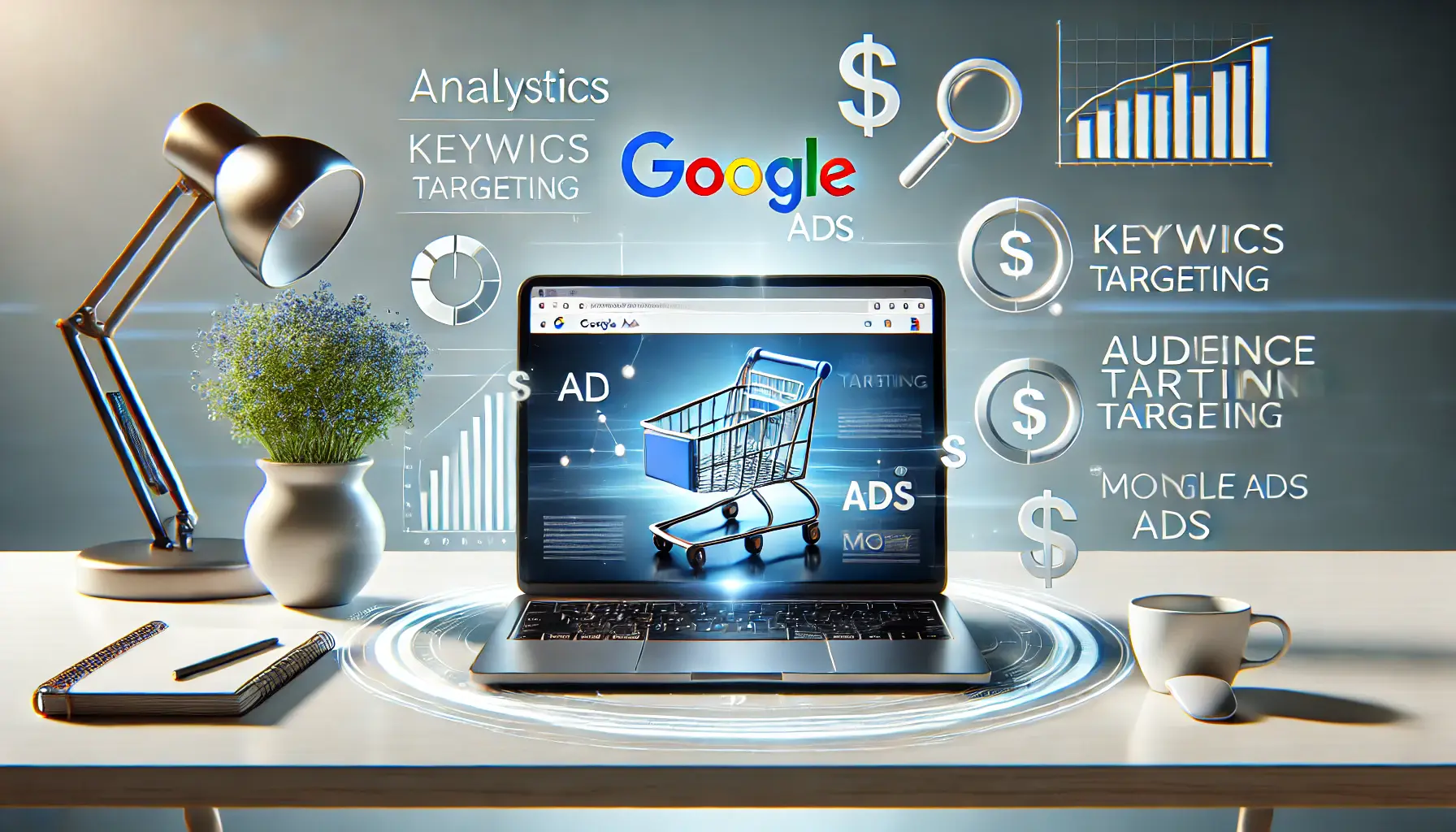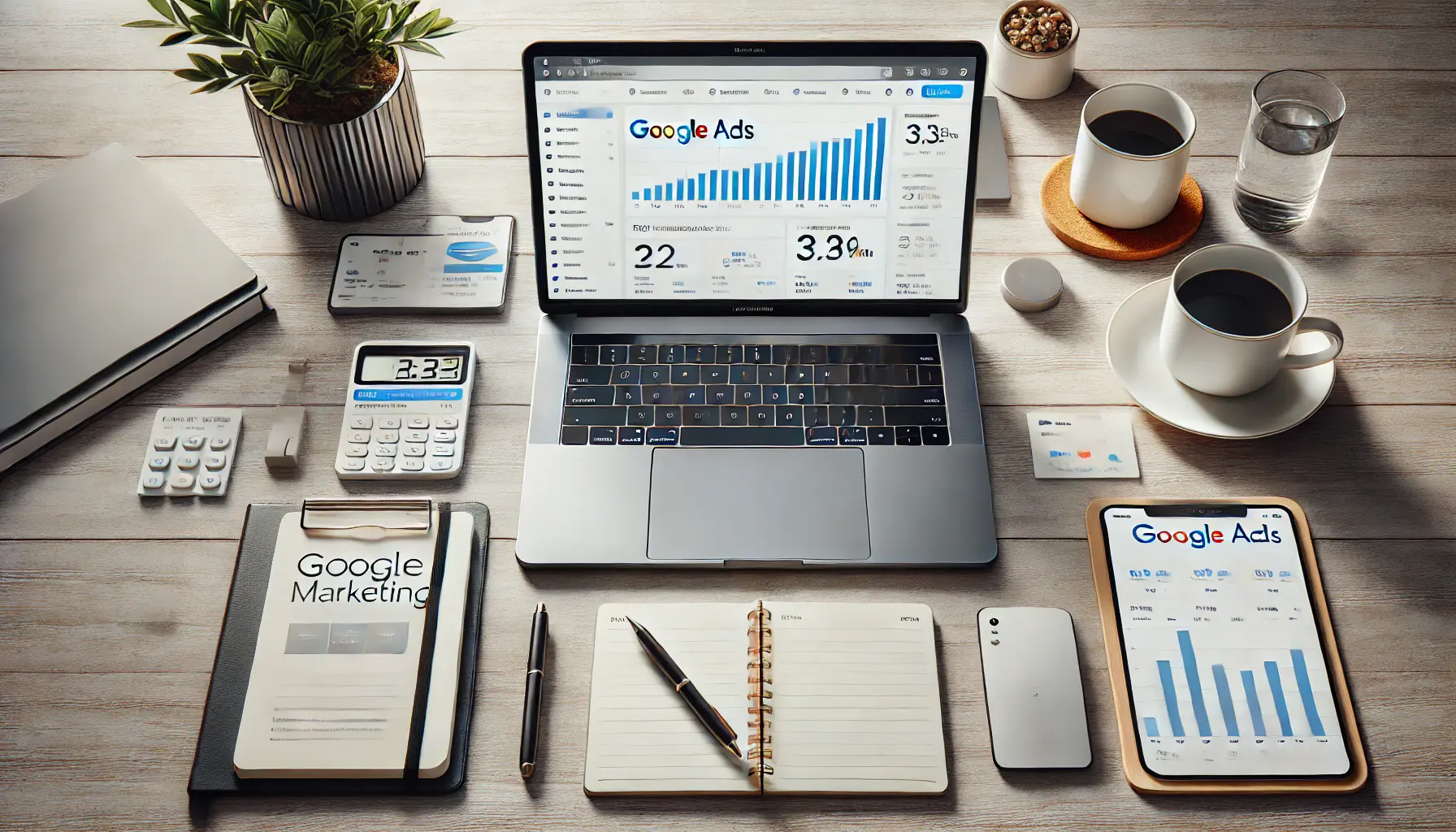Google Ads has been one of the most powerful tools that have completely changed how businesses promote their products and services online.
In today’s competitive digital landscape, leveraging the advantages of Google Ads can mean the difference between staying ahead or falling behind your competitors.
Whether you’re a small business owner looking to expand your reach or an established brand aiming for greater market share, understanding how to use Google Ads effectively can help you achieve your marketing goals.
This article dives into the key benefits of Google Ads, starting with its ability to boost your business in remarkable ways.
- Boost Your Business with Google Ads
- Precise Targeting Capabilities of Google Ads
- Cost Control and Budget Flexibility
- Measurable and Trackable Performance Metrics
- Integration of Google Ads with Other Marketing Channels
- The Unmatched Advantages of Google Ads
- Frequently Asked Questions About the Advantages of Google Ads
Boost Your Business with Google Ads
Google Ads offers businesses the opportunity to achieve outstanding growth through targeted advertising.
With millions of searches performed on Google every day, this platform provides unmatched visibility for your products and services.
Let’s explore the ways Google Ads can help you grow your business.

Illustrating the process of increasing leads and acquiring customers using targeted advertising tools.
Increase Leads and Customers
The quality of leads assured by Google Ads is one of the biggest advantages of using the platform.
Targeting specific keywords around user intent ensures that your ads reach the right audience.
This means that people who see your ad are already interested in what you offer, increasing their likelihood of converting into paying customers.
- With Google Ads, you can build highly targeted campaigns that reach specific demographics.
- It enables you to target users who are actively searching for your products or services.
- In the pay-per-click model, you pay only for actual visits to your website, ensuring cost efficiency.

Highlighting the global and digital strategies for improving brand awareness.
Improve Brand Awareness
Even when users aren’t clicking on your ad, the more your business name pops up in search results, the more it is recognized.
Over time, this builds trust and establishes your business as a legitimate consideration in the minds of consumers.
Google Ads keeps your brand visible in a crowded marketplace.
- Display ads can visually showcase your brand across the Google Display Network.
- Remarketing ads help you stay connected with users who have previously interacted with your site.
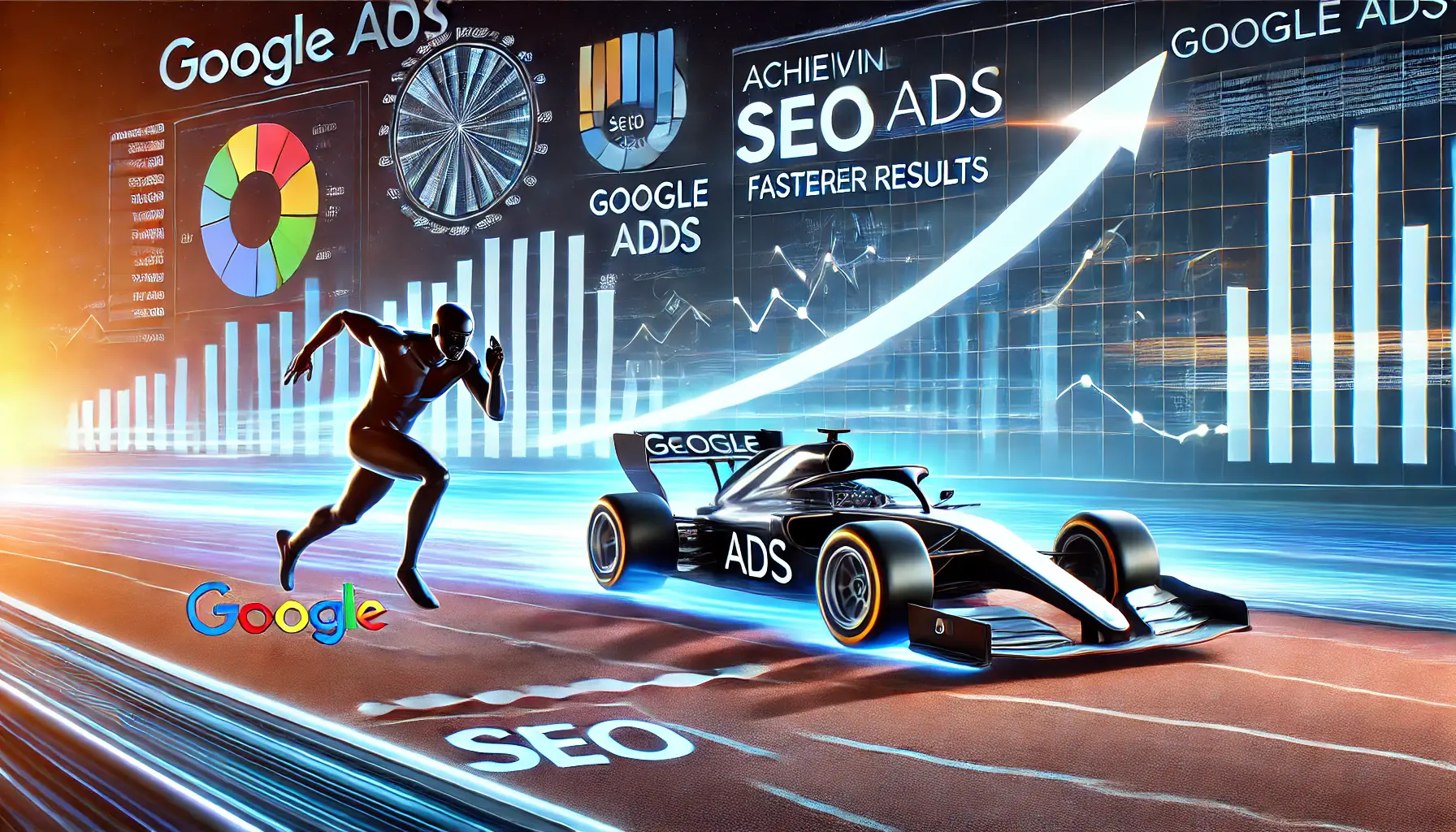
Demonstrating the speed and efficiency of Google Ads compared to SEO.
Achieve Faster Results Compared to SEO
While SEO is important for long-term success, it can take months to deliver significant results.
On the other hand, Google Ads offers instant visibility.
With keyword bidding, you can get your website to the top of search results within minutes of a campaign going live, driving traffic without delays and generating leads.
- Launch campaigns and start seeing results within hours.
- Adjust bids and targeting parameters in real time to maximize performance.
By using Google Ads strategically, your business can jump into new growth opportunities, bringing leads, sales, and recognition faster than ever.
Ready to explore more benefits?
Let’s dive deeper in the next section.
Google Ads offers businesses unmatched visibility, enabling growth through targeted advertising to reach millions of daily Google users effectively.
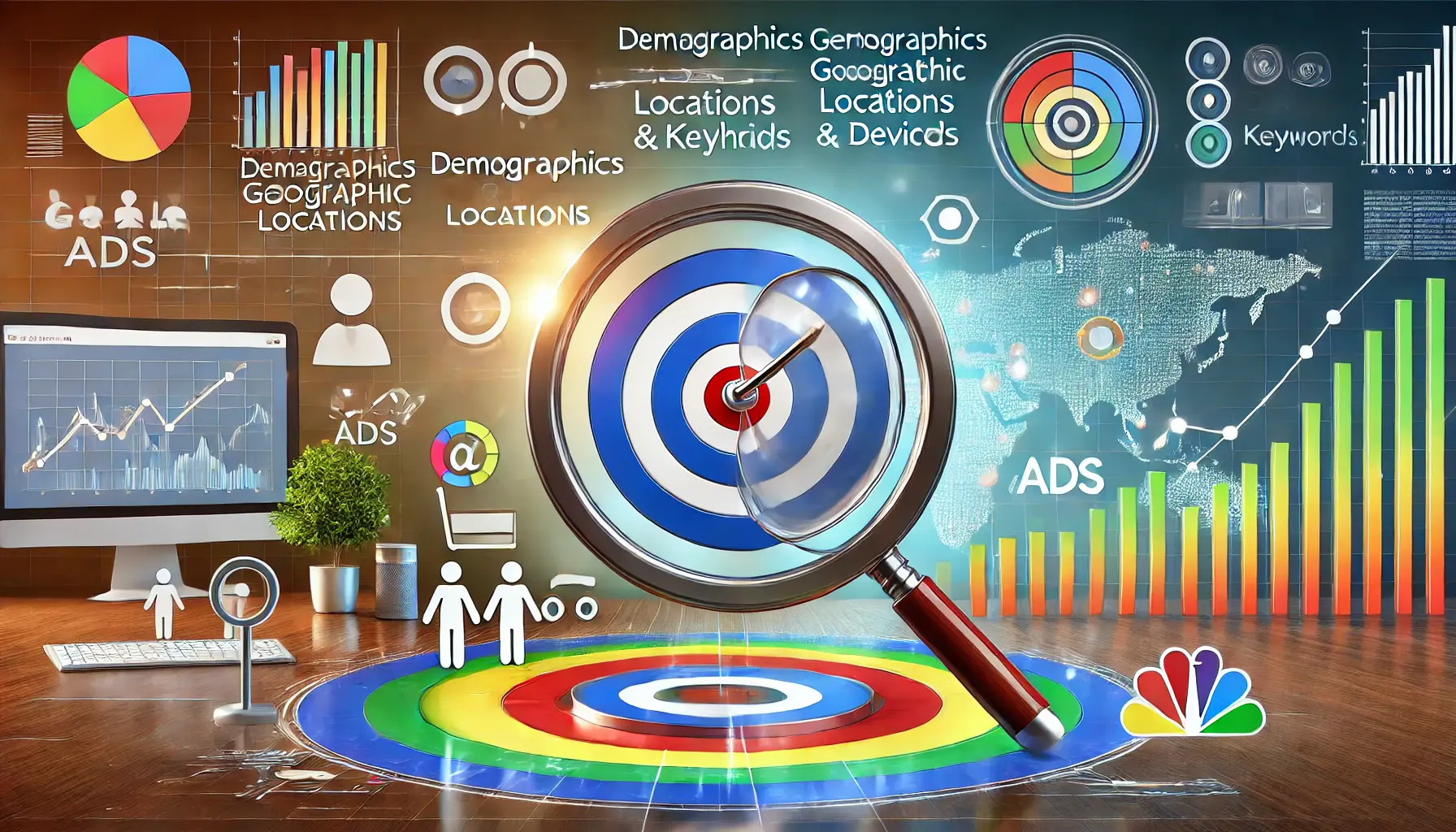
Highlighting the precise targeting capabilities offered by Google Ads.
Precise Targeting Capabilities of Google Ads
One of the standout advantages of Google Ads is its precise targeting capabilities, allowing businesses to reach their ideal customers with remarkable accuracy.
By leveraging these features, you can ensure your advertising efforts are both effective and efficient.
Let’s delve into the key targeting options available.

Visualizing the precision of keyword targeting to connect with relevant audiences.
Keyword Targeting for Relevant Audiences
Google Ads enables you to target specific keywords that potential customers are searching for.
By selecting relevant keywords, your ads appear to users actively seeking products or services like yours, increasing the likelihood of conversions.
- Identify and bid on keywords that align with your offerings.
- Utilize negative keywords to exclude irrelevant searches.
- Regularly update your keyword list based on performance data.

Showcasing the precision of demographic and geographic targeting in digital campaigns.
Demographic and Geographic Targeting
Understanding your audience’s demographics and locations is critical.
With Google Ads, you can narrow down ad targeting based on factors such as age, gender, household income, and geographic location.
This ensures your ads are more relevant to target users.
- Set bid adjustments for certain demographics to optimize your ad spend.
- Target specific geographic regions or exclude areas where your services are not available.
- Combine demographic and geographic data for more refined targeting.

Visualizing the adaptability of device and time-based targeting in digital advertising.
Device and Time-Based Targeting
Consumer behavior varies across devices and times of the day.
With Google Ads, you can customize your campaigns to target users on specific devices—such as mobile, desktop, or tablet—and schedule your ads to run at times when your audience is most active.
- Analyze performance metrics to determine peak engagement times.
- Optimize ad formats for different devices to enhance user experience.
- Implement bid adjustments based on device performance.
By utilizing these precise targeting capabilities, Google Ads empowers your business to connect with the right audience at the right time, maximizing the effectiveness of your advertising campaigns.
Ready to explore more benefits?
Let’s continue to the next section.
One of the standout features of Google Ads is its precision targeting, ensuring your campaigns connect with the right audience through demographics, keywords, and device targeting.

Showcasing smart financial planning through cost control and budget flexibility in advertising.
Cost Control and Budget Flexibility
One of the significant advantages of Google Ads is the ability to maintain strict control over your advertising costs while enjoying remarkable budget flexibility.
This ensures that your marketing efforts align with your financial capabilities and objectives.
Let’s explore how Google Ads facilitates this.

Highlighting the flexibility of setting budget limits in digital advertising.
Set Your Own Budget Limits
With Google Ads, you are free to decide how much you will spend on your campaigns.
You do this mainly through the average daily budget, which defines the amount you are comfortable spending per day.
Even though the actual daily spend may vary, Google ensures that your monthly spend does not exceed your calculated limit, offering protection against high costs.
- Set a daily budget in sync with your overall marketing strategy.
- Change your budget anytime to meet market demands or business needs.
- Use shared budgets to effectively allocate funds across multiple campaigns.

Visualizing the pay-per-click model in digital advertising.
Pay-Per-Click Model Explained
Google Ads operates as a pay-per-clickAn advertising model where advertisers pay only when a user clicks on their ad. (PPC) advertising model wherein you pay only when someone clicks on your ad.
This ensures that your budget is utilized for engaging users who have shown interest in your offerings, improving the ROI of your advertising spend.
- Bid for keywords relevant to your products or services to attract qualified traffic.
- Monitor and adjust bids to maintain cost-effectiveness and competitiveness.
- Leverage Google’s bidding strategies to automate bid adjustments based on performance goals.

Illustrating smart bidding strategies for optimized return on investment in digital advertising.
Optimize ROI with Smart Bidding Strategies
To further enhance budget efficiency, Google Ads offers Smart Bidding strategies that use machine learning to optimize bids in real-time.
These strategies aim to maximize conversions or conversion value within your specified budget constraints, allowing for more effective cost management.
- Choose from different Smart Bidding options, such as Target CPA or Target ROAS, depending on your campaign goals.
- Analyze performance data to determine bids and budget allocations effectively.
- Refine your bidding strategies on an ongoing basis to match market trends and consumer behavior.
By facilitating cost control and budget flexibility, Google Ads enables every business to manage their advertising expenditure in such a way that every dollar spent contributes to achieving your marketing goals.
Ready to explore more advantages?
Let’s head over to the next section.
Google Ads empowers businesses to maintain control over advertising costs with customizable budgets and performance-driven Smart Bidding strategies.

Highlighting the importance of measurable and trackable performance metrics in digital advertising.
Measurable and Trackable Performance Metrics
One of the significant advantages of Google Ads is its ability to provide detailed insights into your advertising campaigns through measurable and trackable performance metrics.
By analyzing these metrics, you can make informed decisions to optimize your campaigns effectively.
Let’s explore some of the key performance indicators (KPIs) that Google Ads offers.

Visualizing the importance of tracking and improving Click-Through Rate (CTR) in digital advertising.
Click-Through Rate (CTR)
CTR measures the percentage of users who click your ad against the total number of views, or impressions.
A high CTRClick-Through Rate, a metric showing the percentage of users who click on an ad compared to the total number of views. indicates the relevance of your ad to the target audience.
- CTR shows the effectiveness of ad copy and keywords.
- Run various versions of your ads to test what resonates most with your target audience.
- Utilize ad extensions to provide additional information and increase CTR.

Visualizing the optimization of conversion rates in digital advertising.
Conversion Rate (CVR)
CVR represents the percentage of users who complete a desired action, such as making a purchase or filling out a form, after clicking on your ad.
Tracking CVRConversion Rate, the percentage of users who complete a desired action after clicking on an ad. helps you understand how well your landing pages and overall funnel are performing.
- Ensure that your landing page is relevant to the ad and provides a seamless user experience.
- Run A/B testing to optimize landing page elements for better CVR.
- Analyze user behavior to identify and address potential drop-off points.

Illustrating the management of acquisition costs in digital advertising campaigns.
Cost Per Acquisition (CPA)
CPA is defined as the average cost to acquire a customer.
It helps judge how cost-effective your campaigns are.
- Set CPA targets based on your business goals and profit margins.
- Leverage automated bidding strategies, such as Target CPA, to maintain desired acquisition costs.
- Regularly revisit your campaigns to ensure CPA remains within acceptable bounds.

Visualizing high returns and profitability with Return on Ad Spend (ROAS) in advertising.
Return on Ad Spend (ROAS)
ROAS measures the revenue generated for every dollar spent on advertising.
The higher the ROASReturn on Ad Spend, a metric indicating the revenue generated for every dollar spent on advertising., the more profitable the campaign is.
- Calculate ROAS to determine the effectiveness of your ad spend.
- Allocate more budget to high-performing campaigns to maximize returns.
- Continuously optimize underperforming campaigns to improve ROAS.
By closely monitoring these performance metrics, Google Ads lets you gauge the success of your advertising and make informed decisions to enhance your campaigns.
Ready to uncover more advantages?
Let’s proceed to the next section.
Google Ads provides detailed performance insights, such as CTR, CVR, CPACost Per Acquisition, the average cost incurred to acquire a customer., and ROAS, allowing businesses to make data-driven decisions to optimize campaigns effectively.
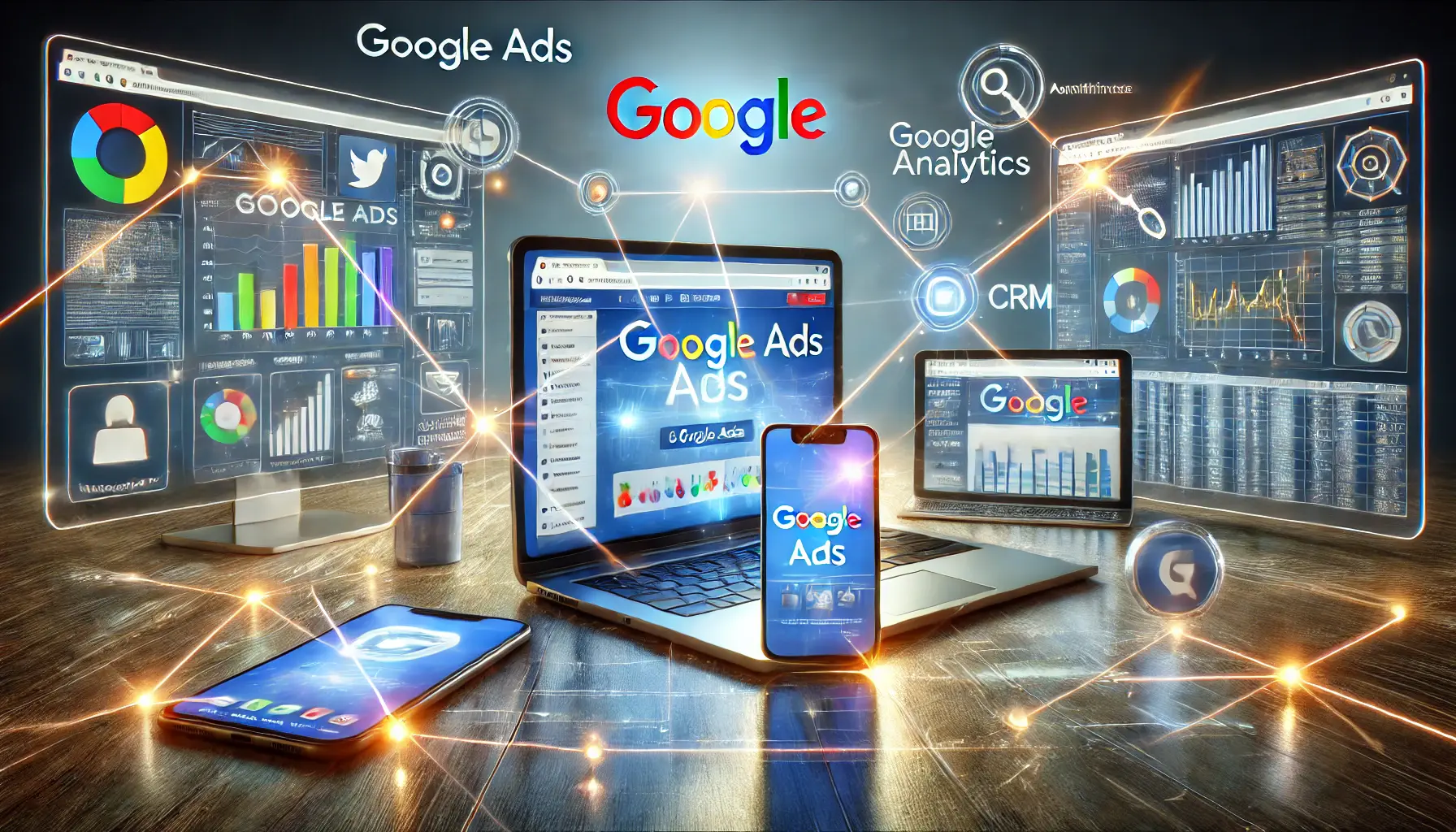
Highlighting the seamless integration of Google Ads with various marketing channels.
Integration of Google Ads with Other Marketing Channels
One of the significant advantages of Google Ads is its ability to integrate seamlessly with various marketing channels, enhancing the effectiveness of your overall marketing strategy.
By combining Google Ads with other platforms, you can create a cohesive and comprehensive approach to reach your target audience.
Let’s explore how Google Ads integrates with different marketing channels.
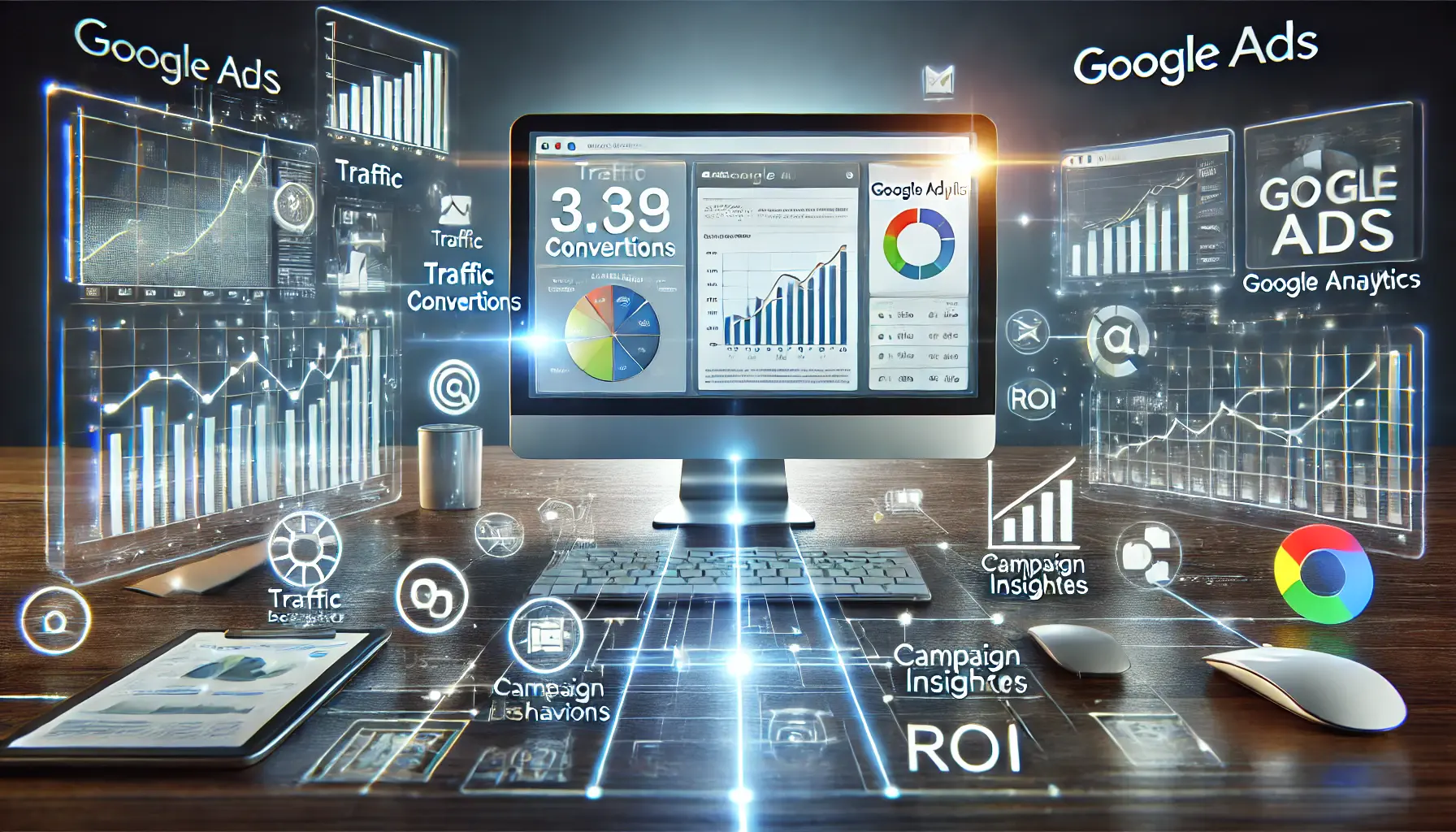
Illustrating the seamless integration of Google Ads with Google Analytics for effective data sharing.
Integration with Google Analytics
Linking Google Ads with Google Analytics provides a deeper understanding of what users do on your website after clicking on your ad.
This integration enables you to:
- Track the actions of users on your website, including page views, time spent, and conversions.
- Analyze the performance of your campaigns to identify areas for improvement.
- Leverage data to refine your targeting and bidding strategies.
Integration with Social Media Platforms
Combining Google Ads with social media platforms, such as Facebook and Instagram, enables you to:
- Retarget users who have previously engaged with your website or ads.
- Maintain consistent messaging across different platforms to reinforce brand awareness.
- Leverage the strengths of each platform to reach a broader audience.

Illustrating the seamless integration of Google Ads with CRM systems for optimized customer management.
Integration with Customer Relationship Management (CRM) Systems
Integrating Google Ads with CRM systems, like HubSpot or Salesforce, allows you to:
- Import and manage customer data to create targeted ad campaigns.
- Track the customer journey from ad interaction to final sale.
- Optimize campaigns based on customer lifetime value and other metrics.
By integrating Google Ads with these platforms, you can develop a more effective marketing strategy that leverages the strengths of each tool.
This cohesive approach ensures better targeting, improved performance, and overall campaign success.
Would you like to uncover more advantages?
Let’s move on to the next section.
Seamlessly integrate Google Ads with tools like Google Analytics, CRM systems, and social media platforms to create cohesive, multi-channel marketing strategies.
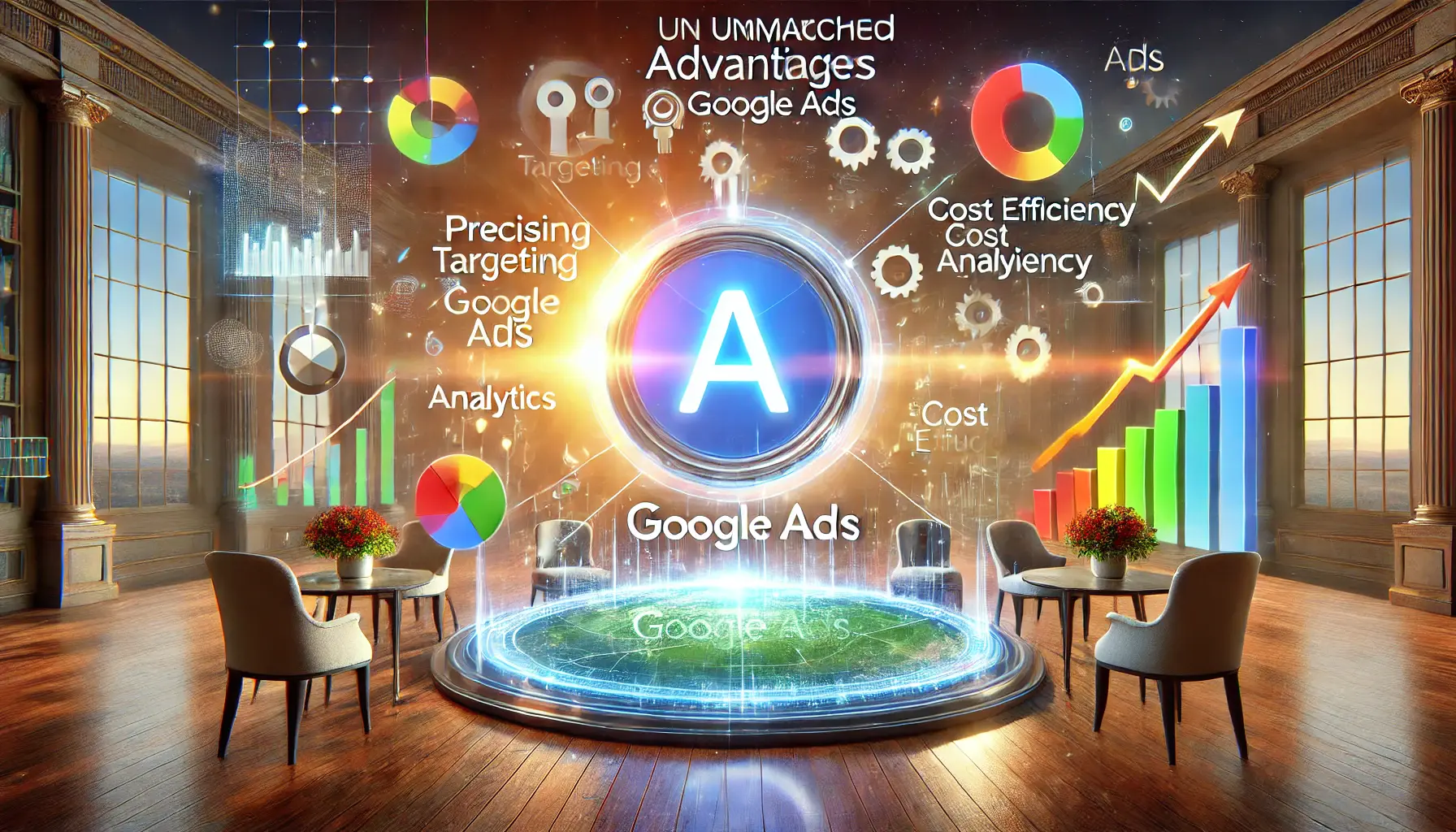
Showcasing the transformative advantages of Google Ads in digital marketing.
The Unmatched Advantages of Google Ads
Throughout this article, we’ve explored the remarkable advantages of using Google Ads to drive growth, boost brand visibility, and achieve measurable success.
As a versatile and data-driven platform, Google Ads empowers businesses to connect with their target audiences effectively and efficiently.
Let’s summarize the key takeaways from this comprehensive guide.
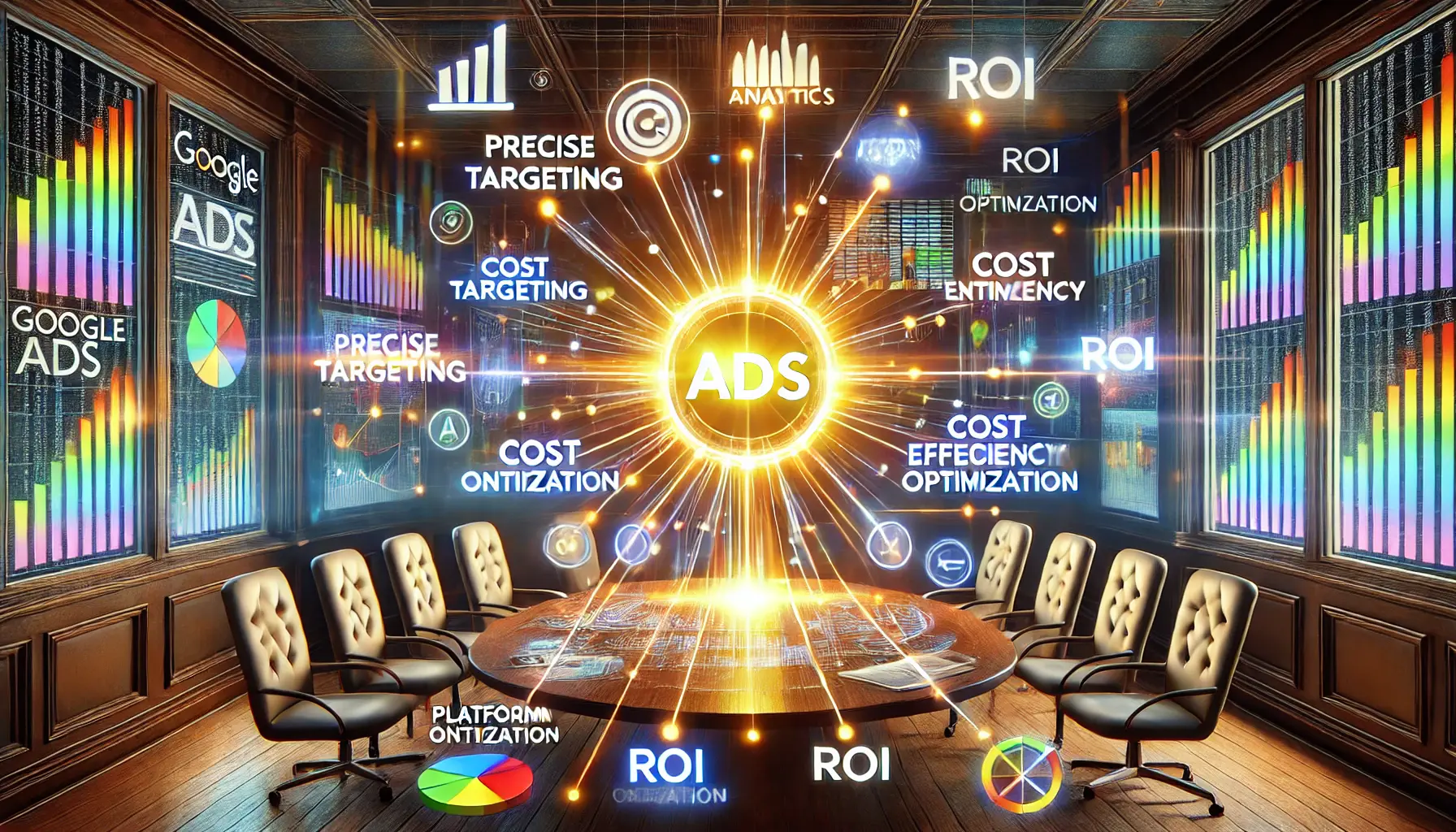
Highlighting the key benefits of Google Ads in creating a powerful and cohesive advertising strategy.
Key Benefits of Google Ads
What makes Google Ads incomparable in the digital world of advertising is its ability to deliver customized solutions for businesses of all sizes.
Here’s what makes it indispensable:
- Precise Targeting: Reach your ideal customers with keyword targeting, demographic targeting, geographic targeting, and device-based targeting, ensuring your ads reach the right audience.
- Cost Efficiency: Control your advertising spend by setting customizable budgets, paying per click, and using advanced bidding strategies to optimize ROI for your campaigns.
- Performance Insights: Access measurable metrics such as CTR, CVR, CPA, and ROAS to monitor campaign performance and make informed decisions based on data analysis.
- Seamless Integration: Integrate Google Ads with tools like Google Analytics, CRM systems, and social media platforms to enhance your overall marketing strategy.

Highlighting the critical role of Google Ads in driving business success.
Why Google Ads is Essential for Your Business
In today’s competitive landscape, leveraging Google Ads is no longer optional—it’s essential.
By harnessing the platform’s diverse features, businesses can:
- Expand Reach: Tap into a vast audience of potential customers actively searching for your products or services.
- Boost Brand Visibility: Ensure your business remains top-of-mind with consistent and engaging advertising campaigns.
- Drive Conversions: Run well-optimized campaigns to turn prospects into loyal customers using user-focused strategies and approaches.
- Adapt and Scale: Dynamically adjust your ad campaigns to meet changing market demands in real-time, while scaling your efforts as your business grows.
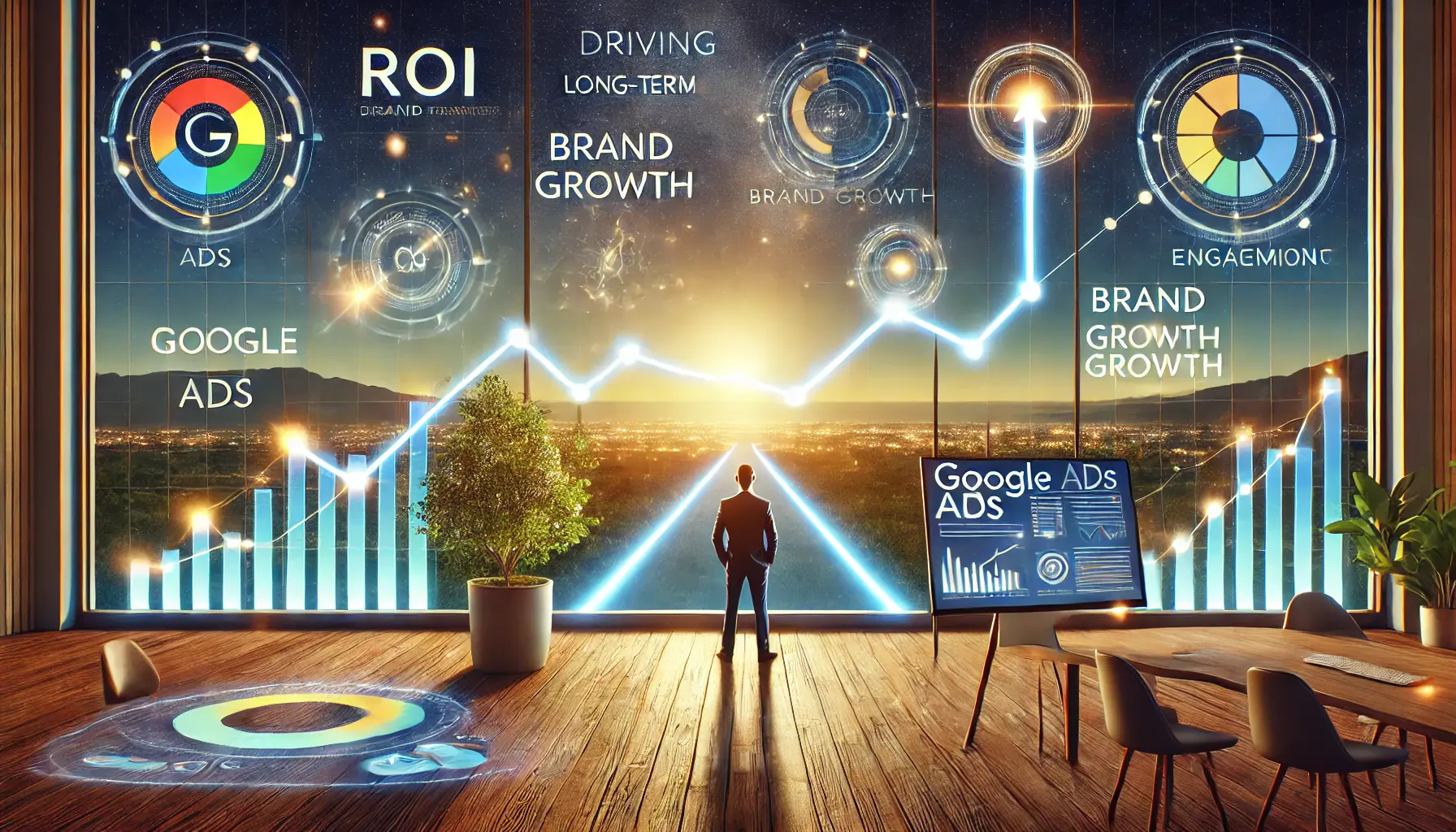
Illustrating the journey of driving long-term success with Google Ads.
Driving Long-Term Success with Google Ads
Google Ads is much more than just an advertising tool; it is a strategic partner for long-term success.
By merging creativity with data analysis and focusing on continuous optimization, businesses can unlock unparalleled opportunities for growth and profitability.
Whether you’re setting up your first campaign or refining an existing one, the benefits of using Google Ads cannot be overstated.
Ready to elevate your business?
Start utilizing Google Ads today to experience the transformative impact it can have on your marketing efforts.
Google Ads combines precise targeting, cost efficiency, and performance insights, making it an indispensable tool for businesses to achieve sustainable growth and visibility in the digital space.

Exploring common questions about the advantages of Google Ads.
Your campaigns can be managed by an agency specialized in Google Ads, check out our service page.
Frequently Asked Questions About the Advantages of Google Ads
As businesses explore the benefits of Google Ads, several common questions arise.
Below, we address some of the most frequently asked questions to provide clarity and insight.
Google Ads is an online advertising platform developed by Google, allowing businesses to display ads on Google’s search engine and its advertising network.
Google Ads operates on a pay-per-click model, where advertisers bid on keywords and pay when users click on their ads.
Key advantages include precise targeting, cost efficiency, measurable performance metrics, and seamless integration with other marketing tools.
Google Ads allows you to set daily budgets and maximum bids, providing flexibility to control and optimize your advertising spend.
Quality Score is a metric that evaluates the relevance and quality of your keywords and ads, influencing your ad’s position and cost-per-click.
Google Ads integrates with tools like Google Analytics and CRM systems, enabling comprehensive tracking and optimization across various marketing efforts.
Yes, by targeting specific keywords and demographics, Google Ads can significantly enhance your website’s visibility to potential customers.
Google Ads supports various ad formats, including text, display, video, and shopping ads, catering to diverse marketing objectives.
Success can be measured using metrics like click-through rate (CTR), conversion rate (CVR), cost per acquisition (CPA), and return on ad spend (ROAS).
